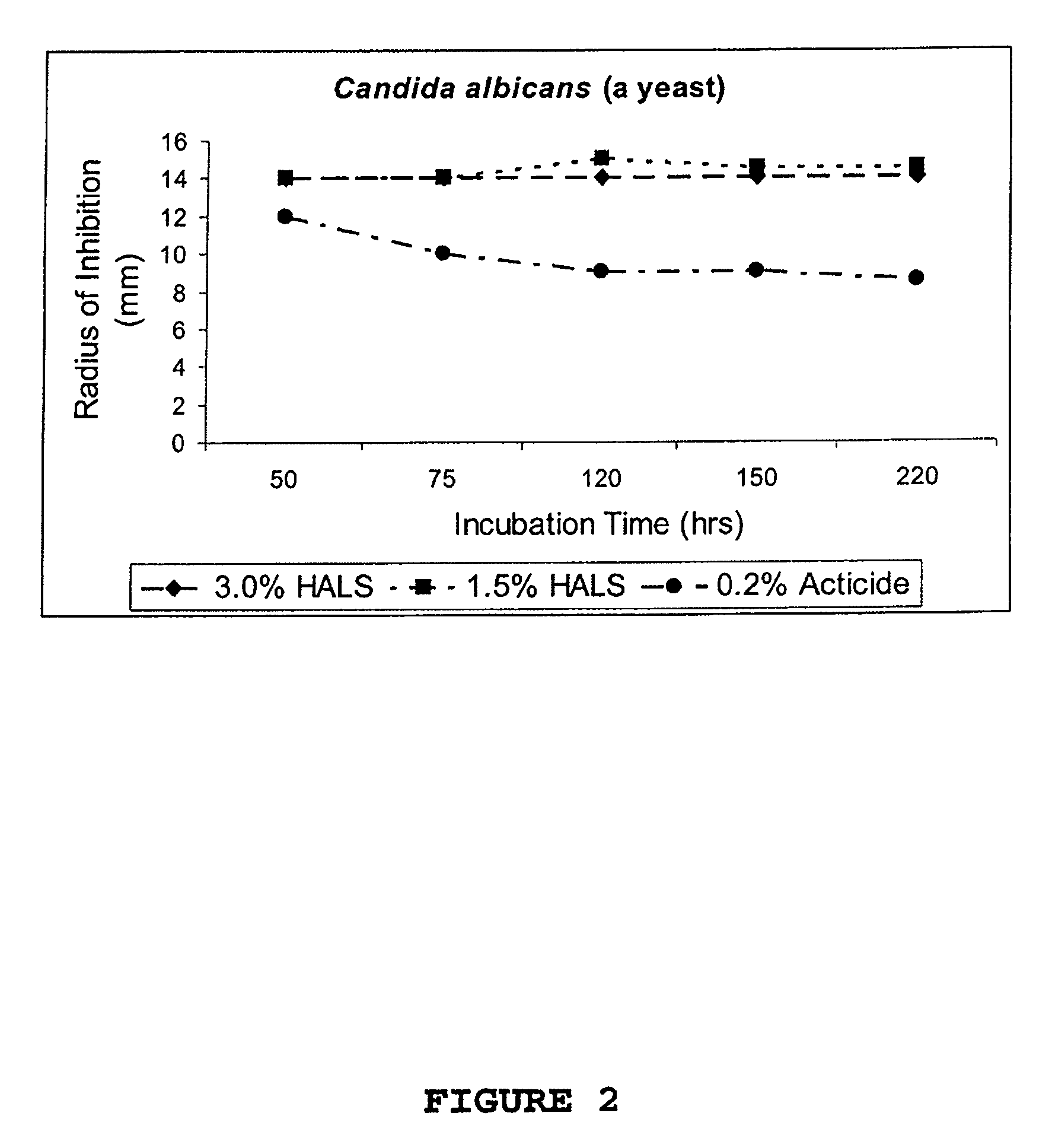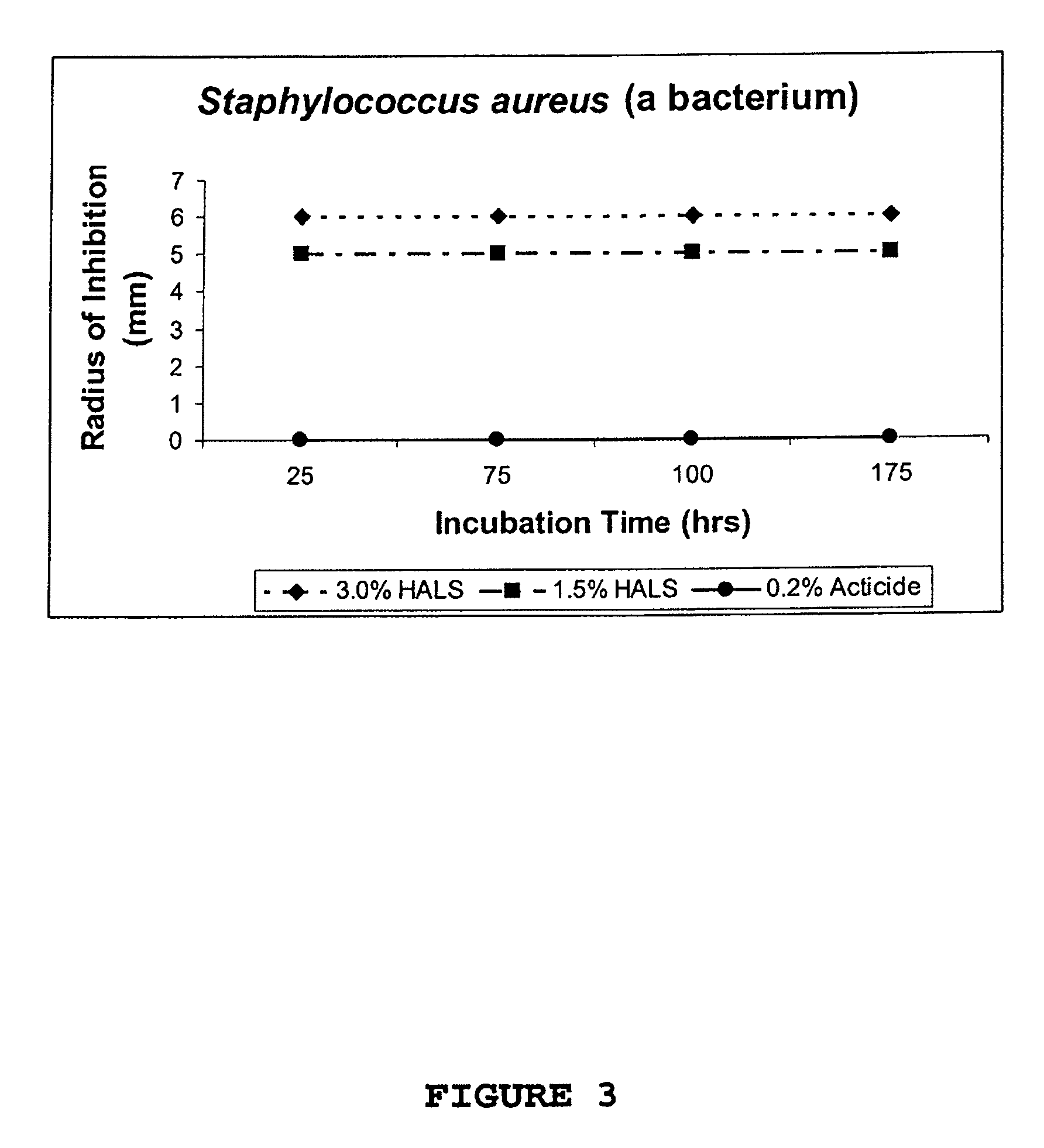Antimicrobial paint
a technology of antimicrobial paint and paint base, which is applied in the direction of antifouling/underwater paint, paints with biocides, coatings, etc., can solve the problems of toxicity to humans, difficult to produce paints with antimicrobial activity, and health hazards, so as to prevent or reduce changes or destructive effects, and facilitate the dissolution of metal pyrithione in paint base. , the effect of reducing the concentration of metal pyrithion
- Summary
- Abstract
- Description
- Claims
- Application Information
AI Technical Summary
Benefits of technology
Problems solved by technology
Method used
Image
Examples
example 1
Manufacture of Hals-Containing Paint
[0059]An antimicrobial paint containing HALS was made by combining bis(1,2,2,6,6-pentamethyl-4-piperidinyl)sebacate and methyl(1,2,2,6,6-pentamethyl-4-piperidinyl)sebacate at a ratio of 1:4 to give a total HALS concentration of 1.50% v / v or 3% v / v to a standard water-based paint comprising zinc pyrithione at a concentration from 0.2-3.0%. The HALS was mixed into the paint using a paint shaker.
example 2
Antimicrobial Properties of a Hals-Containing Antimicrobial Paint
[0060]The antimicrobial properties of the paints from Example 1, containing 1.5% v / v or 3% v / v HALS and zinc pyrithione in an approximately 50:50 ratio, were compared with a standard water-based paint to which 0.2% v / v Acticide was added. Acticide is a preservative used in paint; however Government regulations state that Acticide is not permitted in paints at a concentration any higher than 0.2% v / v. 0.2% v / v Acticide is known to have relatively short-lasting anti-fungal activity.
[0061]Each paint was tested against a mould (Aspergillus niger), a yeast (Candida albicans), a Gram positive bacterium (Staphylococcus aureus) and a Gram negative bacterium (Escherichia coli).
[0062]Aspergillus niger was chosen as it is a typical house-mould, which can also be allergenic. Candida albicans (thrush) was included as a representative of a yeast that causes disease. S. aureus and E. coli are bacterial species that are medically and ...
PUM
| Property | Measurement | Unit |
|---|---|---|
| size | aaaaa | aaaaa |
| thickness | aaaaa | aaaaa |
| concentration | aaaaa | aaaaa |
Abstract
Description
Claims
Application Information
 Login to View More
Login to View More - R&D
- Intellectual Property
- Life Sciences
- Materials
- Tech Scout
- Unparalleled Data Quality
- Higher Quality Content
- 60% Fewer Hallucinations
Browse by: Latest US Patents, China's latest patents, Technical Efficacy Thesaurus, Application Domain, Technology Topic, Popular Technical Reports.
© 2025 PatSnap. All rights reserved.Legal|Privacy policy|Modern Slavery Act Transparency Statement|Sitemap|About US| Contact US: help@patsnap.com



